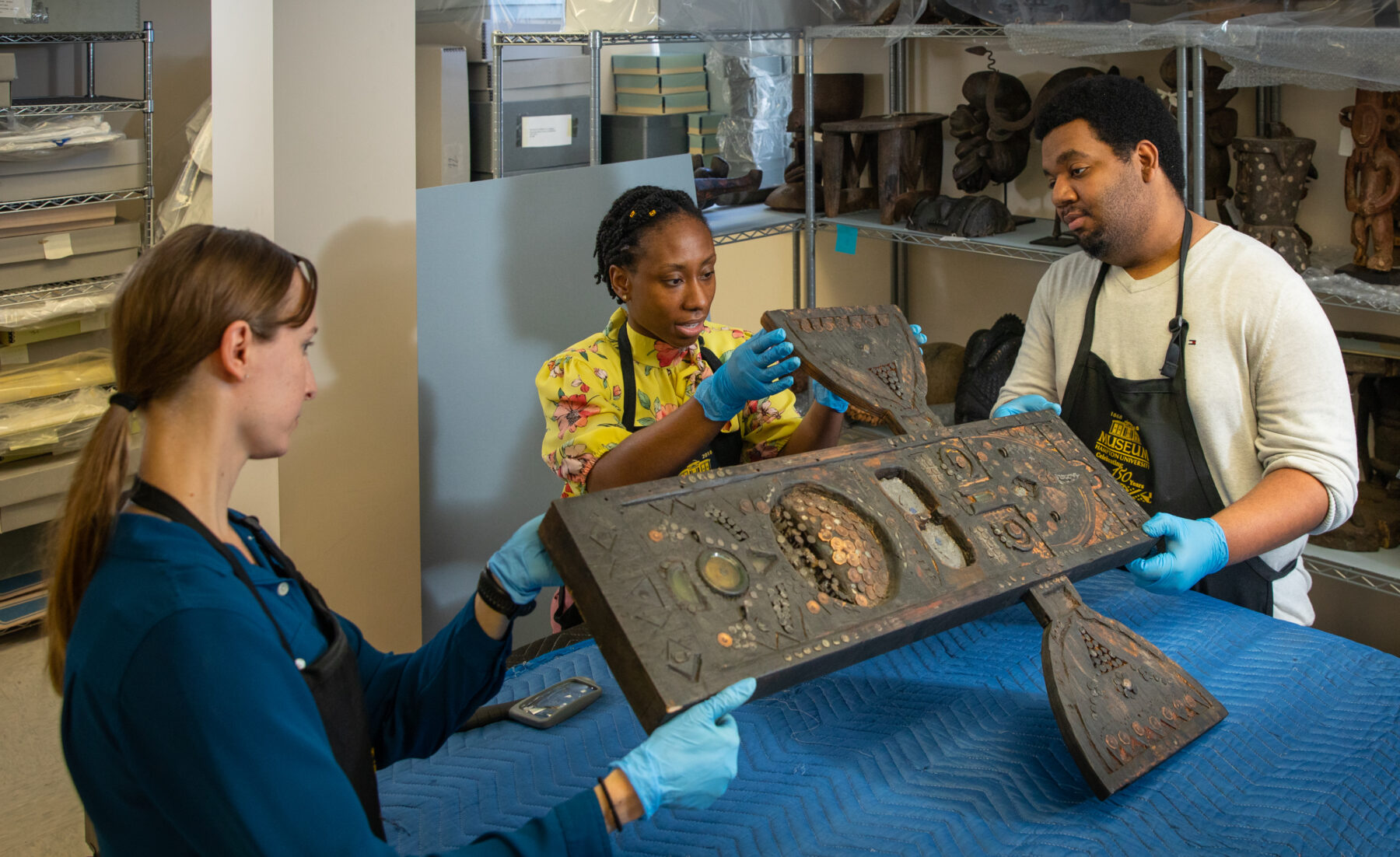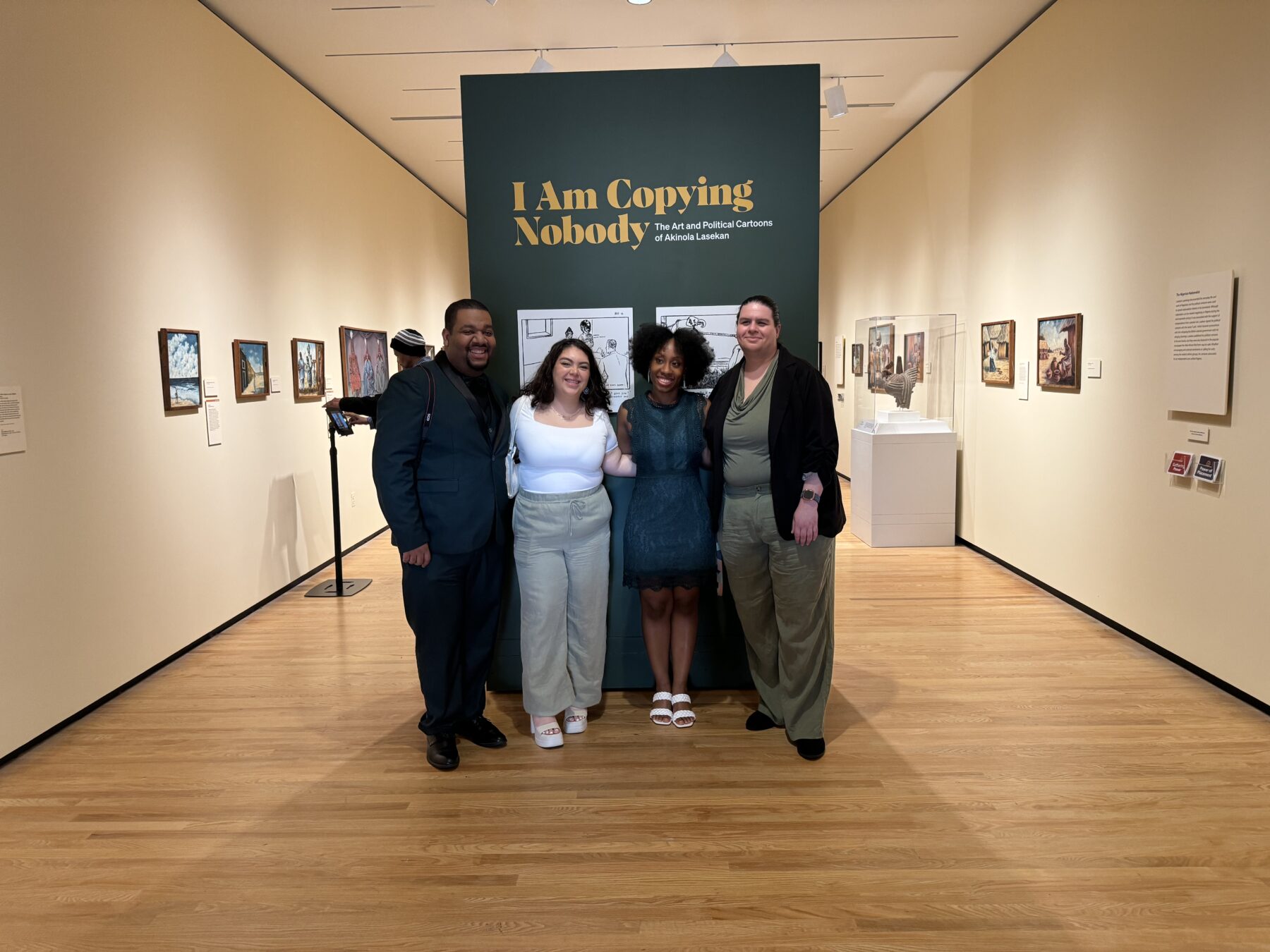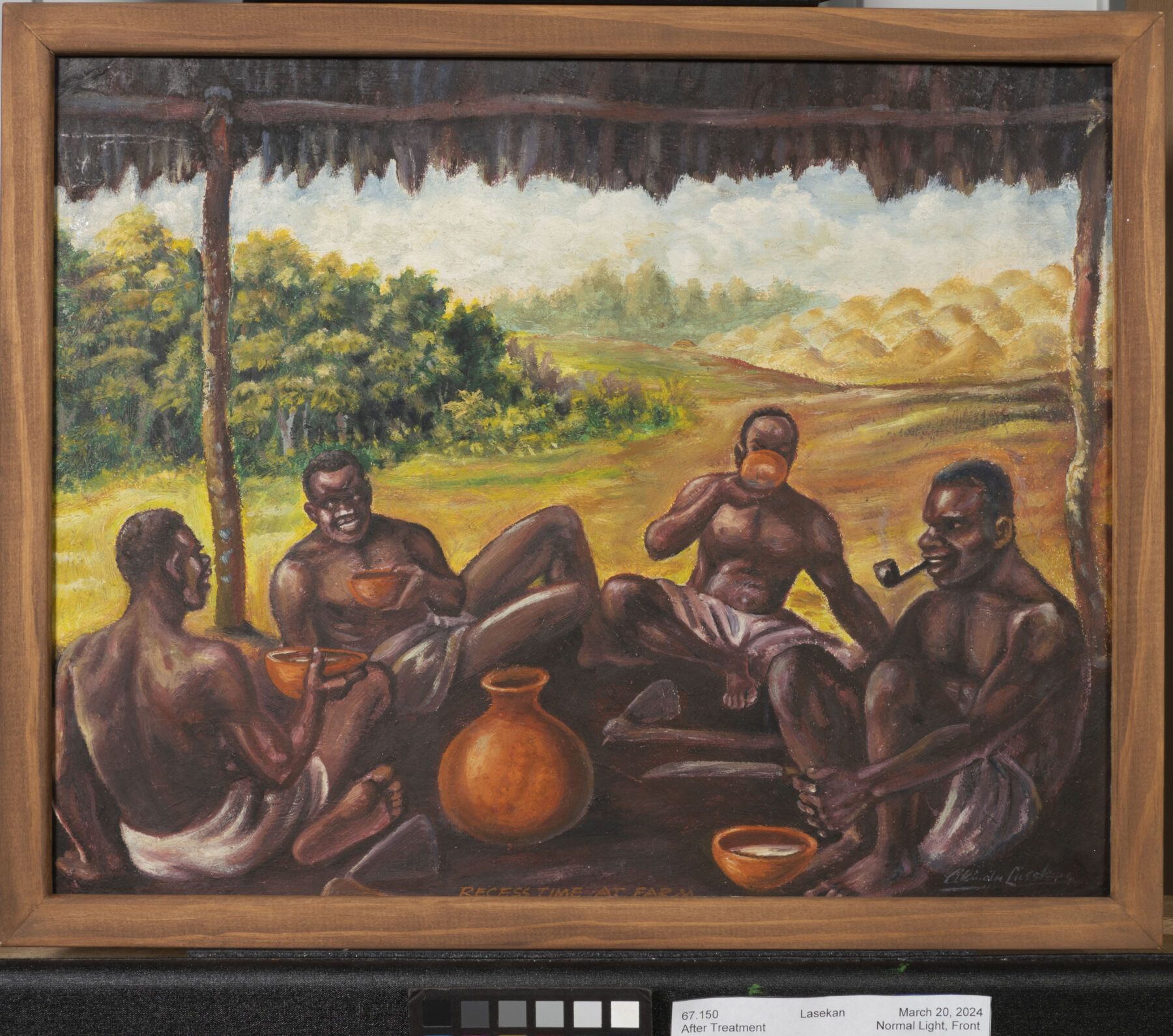Art Spotlight: The Abandoned Hut by Mordecai Buluma

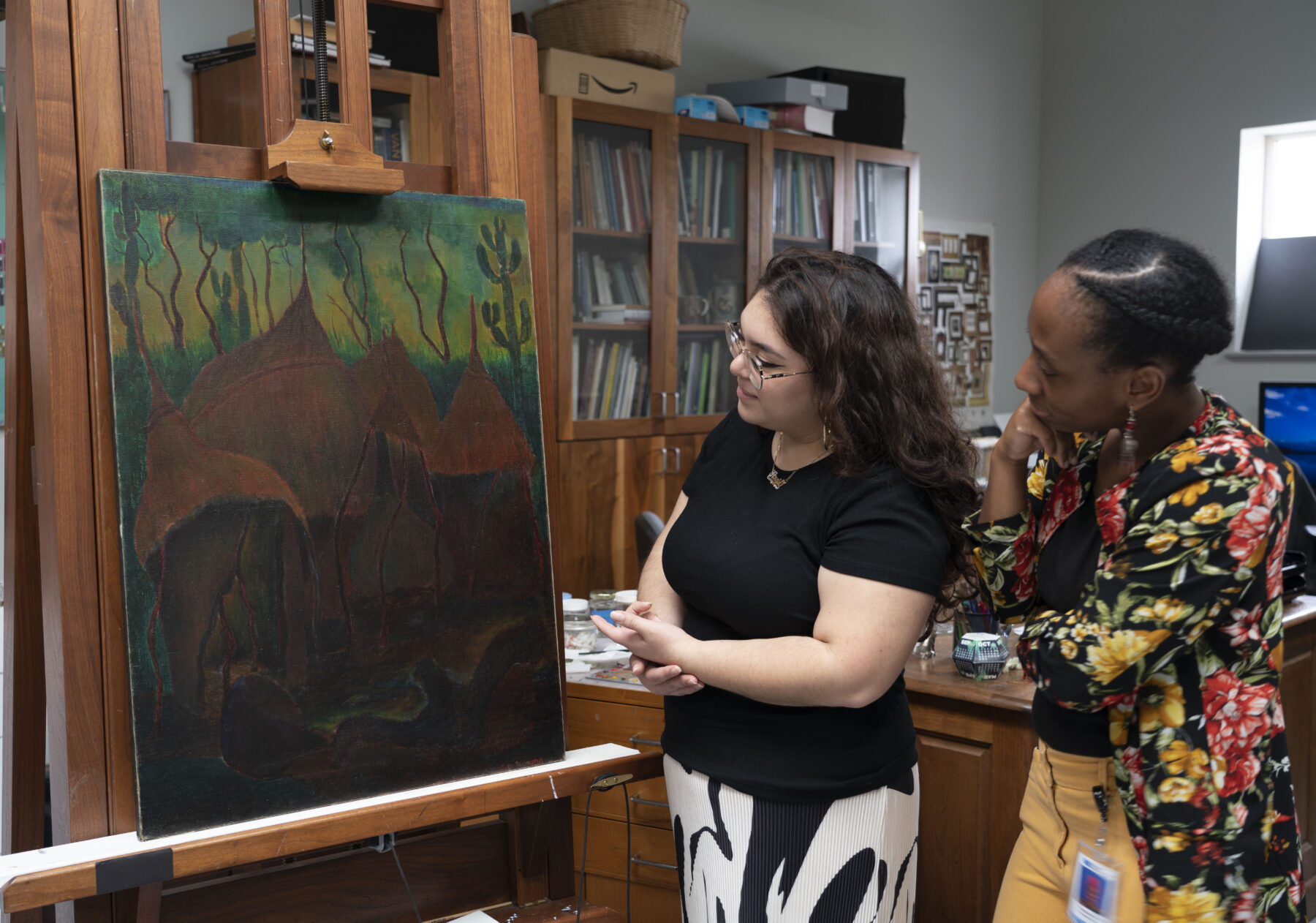
On August 16, 1961, Ugandan artist Mordecai Buluma (born 1934) sent a letter to Evelyn Brown, assistant director at the Harmon Foundation, mentioning his likely stop in New York to revisit The Metropolitan Museum of Art and Museum of Modern Art before returning to Uganda. Believing this to be his last opportunity to travel within the United States, Buluma hoped to meet more people most likely to form new connections1. This letter was sent from Sackville in New Brunswick, Canada while Buluma was studying painting, sculpture, and English at Mount Allison University as a recipient of the Commonwealth Scholarship and Fellowship Plan. Buluma, who was born in the town of Busia in eastern Uganda, was developing his artistic practice in his home country prior to studying at Mount Allison University. In Uganda, he studied at Makerere Art School – now Makerere University – under the apprenticeship of English artist and founder of Makerere Art School, Margaret Trowell, and Scottish artist, Cecil Todd, receiving his diploma in 19602.
As requested by Evelyn Brown, Buluma’s August letter included a document detailing the context of several prints and paintings he mailed to the Harmon Foundation. The document includes a description outlining the meaning of The Abandoned Hut, a painting which features several reddish-brown huts in different stages of decline. According to Buluma, the abandoned homes represent the weakening of familial ties caused by a father’s absence due to the need for him to find better economic opportunities or because of his imprisonment. To ensure the survival of his family, a father might leave his home to obtain employment in a city where jobs are plentiful. However, as time passes, the father finds that he is stuck working in the city, for if he leaves, he will not have enough money to send to his family, pay his debts, or even to support himself. Because of this, the father is shackled to the city while his wife is shackled to the familial home, working tirelessly to maintain the home while caring for their children. Eventually, the strain of survival becomes too much for the family, reflected in their slowly deteriorating home3.
“To me these falling huts are more than huts, they symbolize the struggle through life that these people experience – a struggle which though tenacious must give way to the formidable force of circumstance.” – Mordecai Buluma
Despite the lack of opportunities to exhibit his art in Uganda, Buluma found ways to stay active in the country’s growing art movement. For example, after obtaining his master’s degree, he became a trainee education officer at the Uganda Museum, eventually becoming a fully-fledged education officer in 1966. In this role, he traveled to Mexico, Yugoslavia, and the United States; created art education initiatives; operated as a facilitator for students in the United States and Uganda; and built a film library. Buluma taught Fine Arts and English at what is now Kyambogo University, worked as a curator for the Nommo Gallery, and held directorships at the Uganda Museum and the Uganda National Culture Centre before retiring from public service in 19894. At the age of 90, Buluma currently resides in Busia, Uganda where he continues his artistic practice5.
Conserving The Abandoned Hut
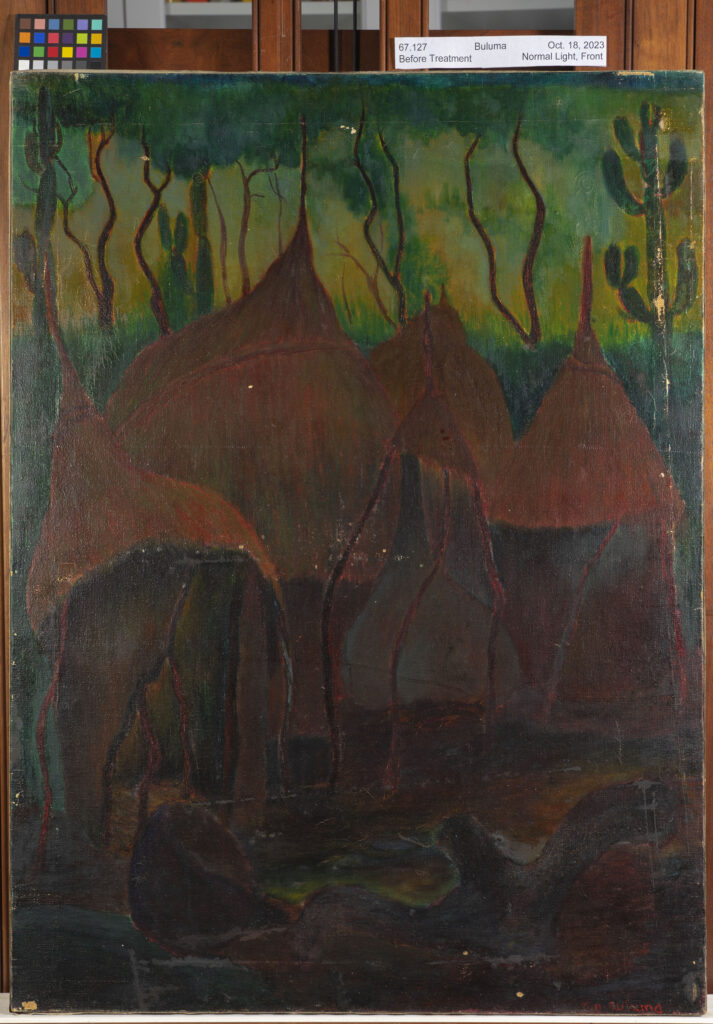
Examination and Condition
The first examination of The Abandoned Hut by Mordecai Buluma revealed that the painting had condition issues that impacted not only the structural stability, but also the clarity of the artwork.
The canvas was in good condition, however, there were multiple small distortions as well as a small ½ inch tear near the left edge of the painting. Despite this, the canvas still had a proper tension and the strainer (the wooden structure the canvas is attached to) was structurally stable.
Significant mechanical cracking could be seen on the painting, including sigmoid cracks that are caused by pokes or blows to the canvas, and feather cracks that are caused by scraping the back of the canvas. Multiple areas of losses and abrasions could be seen scattered throughout the painting, particularly near the top right edge. Although these cracks and losses were visually distracting, only a few areas had lifting or flaking paint.
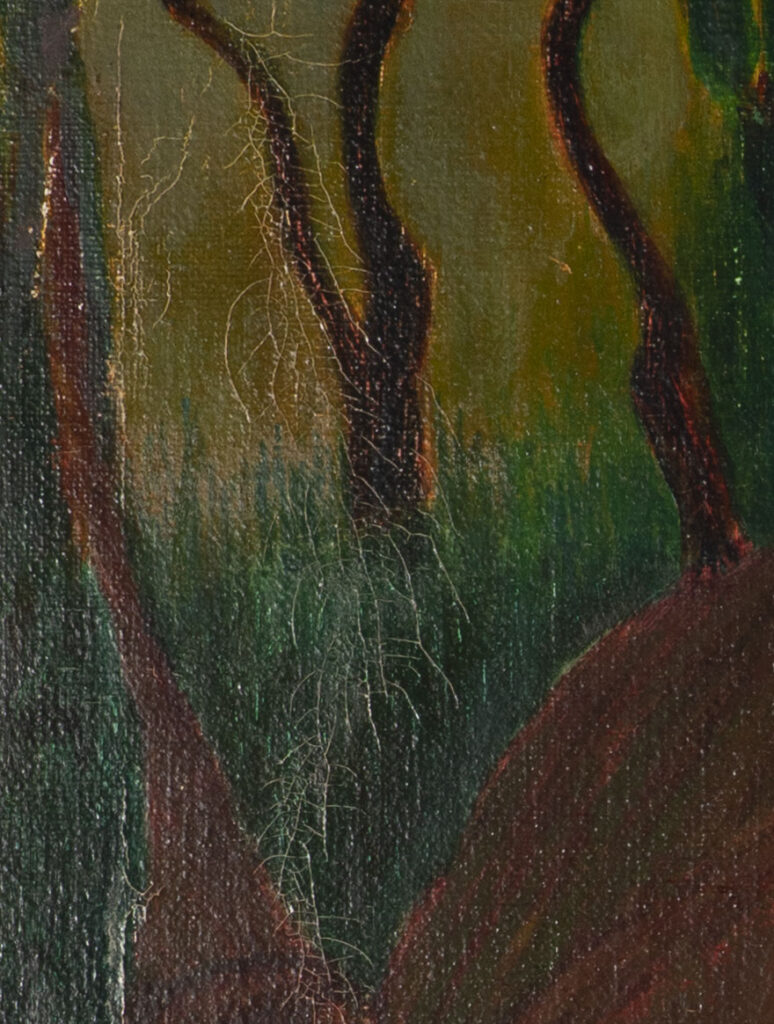

Evidence of previous restoration campaigns could be seen as there were multiple fibrous, paper-like fills, particularly near the upper right corner. Multiple areas of overpaint had become matte and desaturated, creating a visual distraction. The surface of the painting was quite matte and unsaturated, darkening the painting and making it hard to read, particularly in the bottom half.
In the top portion of the painting there was a distinct difference in gloss between the trees and the sky, as the trees were quite glossy while the sky was matte. However, there did not appear to be a distinct varnish layer when the painting was examined under UV-induced visible fluorescence. It is likely that the artist may have glazed over these areas with a small amount of paint mixed with oil paint medium in order to create a translucent wash of paint that would create a deeper tone, creating a selective sheen.
Treatment
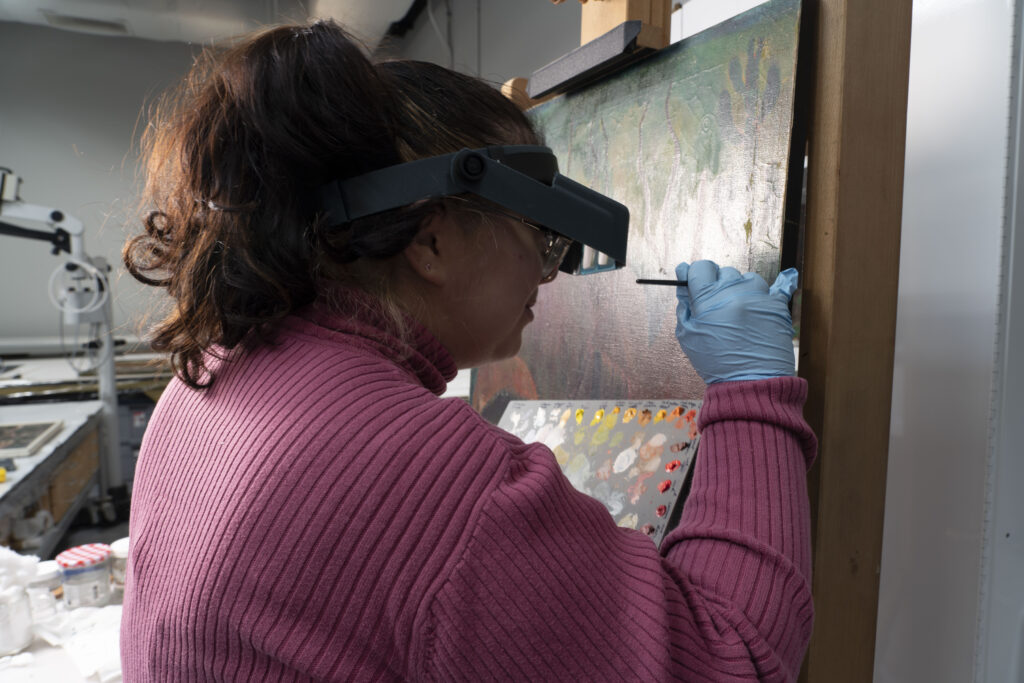
The treatment began with consolidation. Areas of lifting paint and paint loss were stabilized using dilute sturgeon glue (a protein-based adhesive) applied with a brush. The distortion associated with the tear was locally minimized using humidity and weight. The tear was then mended using Reemay, or non-woven polyester fabric, which is a cut to a size slightly larger than the tear, which was adhered to the canvas using a heat-activated adhesive film applied with a small heated tacking iron.

Next, the back and front of the canvas were dry cleaned using a soft brush and cosmetic sponges. Once the painting was cleaned and stabilized, the lack of saturation was addressed. Solvent tests were performed on the surface of the painting using multiple solvents of varying polarities and small cotton swabs in order to see what would be safe to use on the surface of the painting.
After testing, it was determined that the best and safest option was the use of a varnish that was soluble in odorless mineral spirits. Swatches of varnish were placed on the bottom edge of the painting and Tashae Smith, Andrew W. Mellon Curatorial fellow, was consulted.
After the appropriate varnish was chosen the varnish swatches were carefully removed from the surface of the painting. Small areas of loss were filled using a conservation grade fill material and textured using a small porcupine quill in order to mimic the weave of the canvas. Once the varnish was applied, fills and pronounced cracks were inpainted using reversible conservation paints. Thanks to this conservation treatment, Buluma’s original composition is now easier to decipher and the work is structurally stable, meaning that it will last for years to come.
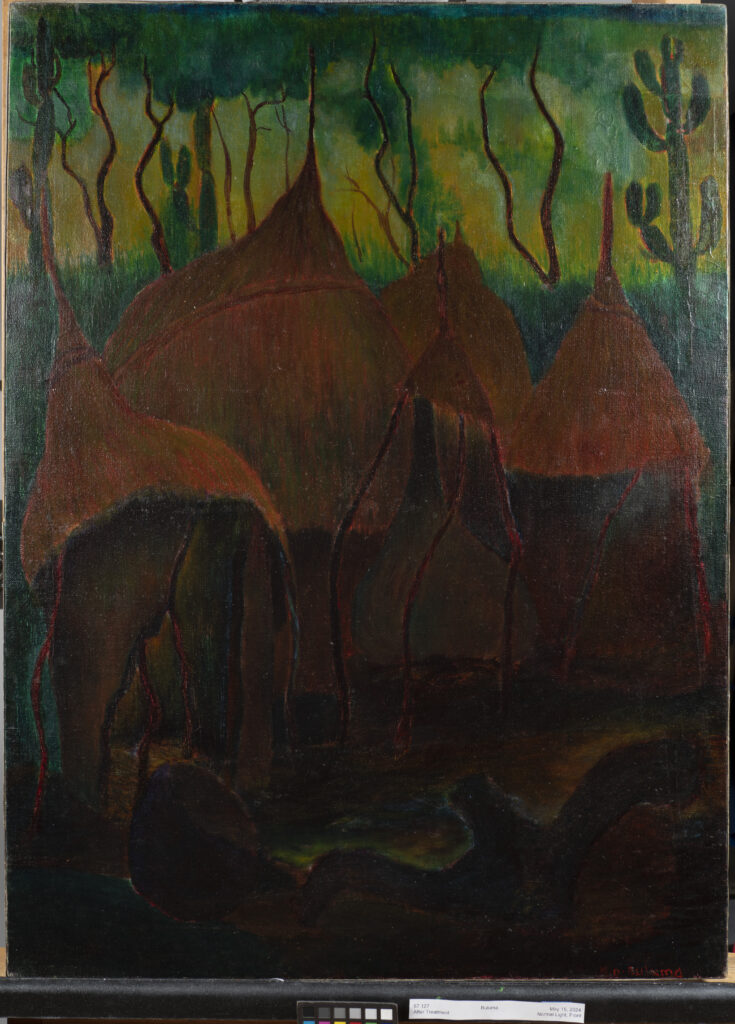
References
1. Mordecai Buluma to Evelyn Brown, August 16, 1961. From Library of Congress, Harmon Foundation, Inc., Records 1913–1967
2. Nantume Violet, “Buluma Mordecai Ochungo,” in African Modernism in America (New Haven, CT: Yale University Press, 2022), 106.
3. Nantume Violet, “Buluma Mordecai Ochungo,” in African Modernism in America, 106.
4. Nantume Violet, “Buluma Mordecai Ochungo,” in African Modernism in America, 106.
5. Nantume, Violet. “Buluma Ochungo Mordecai (Class of ’62).” Owens Art Gallery, February 24, 2022. https://owensartgallery.com/collection/buluma-ochungo-mordecai/.
Explore other articles like this
The Andrew W. Mellon Fellowship: Now and Beyond
In this post, I will highlight some of the accomplishments of this project and address two main takeaways that can help those looking to reproduce a similar fellowship program.
Opening of I am Copying Nobody the Art and Political Cartoons of Akinola Lasekan
On April 13, 2024, I Am Copying Nobody: The Art and Political Cartoons of Akinola Lasekan opened at the Chrysler Museum of Art. Here are some highlights from the exhibition.
Tricky Tape and Finicky Frames
In conservation, tape can be tricky! This post discusses the conservation treatment of the painting Recess Time at Farm by Akinola Lasekan.
